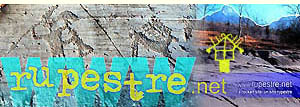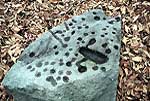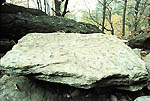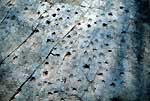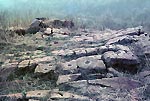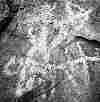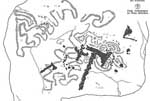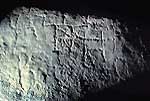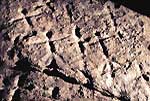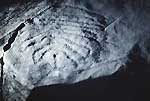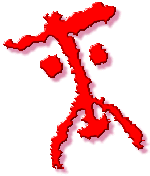|
Cup marks, paintings and
petroglyphs
Rock Art in western Alps is taking
an important place in Alpine Rupestrian Archaeology.
New research methods and groups, new recent discoveries are step by step
focussing on an interesting particularity which cohabits at the same
time with surprising resemblances with Valcamonica Rock Art. Here listed
some online resources from this site.
- Western
Alps rock art, a chronological presentation in 61 slides, from
Neolithic to Iron Age (in Italian)
-
Western Alps – Italy and France – engraved
rocks and rock paintings: 78 records regarding many alpine valleys
(Ubaye, Valle Po, Rocca di Cavour, Valle Pellice, Valsusa, Valcenischia,
Haute Maurienne, Valchiusella, Val Vigezzo...). The records are
taken from the EuroPreArt database (marked EPA, English
only) and from the ARchivio Online (marked ARO, Italian
and English) project (by GRCM).
In the case of duplicated records and titles, the content is slightly
different.
- Maurienne
Rock Art (F – 2002, 2012)
- Immagini
dalla Preistoria, exhibition
Footsteps
of Man worked in western Alps, the most in
Susa (Turin), Albedosa (Alessandria), Vigezzo and Po valleys,
performing professional projects of recording and tracing
prehistoric engraved rocks and rock paintings.
One of the
most active research groups has been the GRUPPO
RICERCHE CULTURA MONTANA (GRCM),
in Turin: it studies Alpine culture and heritage, and also
Rock Art, the most in Susa Valley, west of Turin, near the
border with France.
This group is a voluntaristic one, and it is working in Rock
Art research from 1976.
His logo is taken from a figure engraved at the end of the last
century by an hermit stonecutter living in summer in a mountain
rock shelter. He engraved an entire rock surface with dogs, goats,
and fantastic figures (perhaps referring to some carnival ones).
|
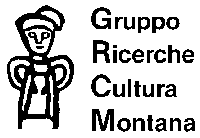 |
Other resources are available
from this site:
One of the most diffused Rock Art elements in western Alps are cup-marks.
It is very difficult to interpret them.
|
|
Cup-marks at Susa have
been undoubtedly made during late Iron Age: they
denote an execution by metal tools and they are
covered by a III century AD roman wall.
Recently it was found that cup-marks at Rupe
Magna (Grosio, Valtellina) cover every other
figure, and they too belong to Iron (Middle) Age.
Cup-marks in Albedosa
Valley have been recently recorded by
Footsteps of Man under commission of Archaeological
Superintendence. Also here they denote an
execution by metal tools. Very interesting
the footprints,
which in Valcamonica take place in Middle
Iron Age Rock Art (often near etruscan inscriptions).
In the Albedosa valley the largest rock is
named Saingiu dei Strie, meaning
Rock of the witches. It can denote a lost
link to pagan rituals.
New figurative
elements have been recently found in Susa Valley. Paintings and
engraved signs show warriors, weapons, spirals
and meanders.
Iron Age rock
paintings have been found in 1989-1991
in Susa Valley, at 100-1200 m of altitude.
They consist in warriors with arch and shield,
sometimes riding a horse. The bi-triangular style
of some figures and the context of the scenes let
suppose an Iron Age dating of the paintings.
The X-ray diffractometry analysis found in the
white paint weddellite, gypsum and calcite. No
organic matter were found.
Two
groups of figures are known, at 1000
and 1300 m of altitude.
Engraved meanders and spirals are
diffused on limestone surfaces. In this region
they seems to belong to a Final Bronze Age -
First Iron Age periods. Some of them in Haute
Maurienne, the nearest French Valley, are
related with topographic engravings. Axes presents
a typical half-moon
shaped blade, which is clearly related with
the axes of the Final Iron Age, like the Ornavasso
(Piemont) ones. The rocks are actually studied
and recorded by commission of Archaeological
Superintendence.
Anthropomorphic figures
superimpose meanders and
can be related to some Roman-Celtic
plaquettes. |
 |
Anthropomorphic
figures are rare, but well present and diffused
in many valleys, with some surprising resemblances
with Valcamonica.
The Pera
dij Crous (The Stone of the Crosses) in
Valchiusella shows about 50 anthropomorphic figures
(Copper Age). Big anthropomorphic figures lies,
always on limestone, in Valgrana.
closely linked to some French paintings (Ardèche)
and to anthropomorphic figures of Bronze Age in
Valcamonica.
New engraved rocks have been found by GRCM in summer
1995 in Valcenischia:
warriors with swords and
square body.
At last (but not at least...) middle Iron
Age warriors, with spear and triangular body
have been studied, with much more figures, in the
rocks of Haute Maurienne by F. Ballet and Filippe
Raffaelli, Musée Savoisien. |
An
interesting hunting scene, with a probable inscription
lies at more than 2300 m of altitude in Haute
Maurienne. The "Steinboks
rock"lies very closely to an high-mountain
path: here the evidence of how old are most alpine
trails.
There is a close likeness with Valcamonica middle
Iron Age hunting scene (V-IV century BC). |
 |
 |
Mount Bego is
on the most important Alpine Rock Art area: the French équipe
of Prof. H. De Lumley in 20 years of work (and tracing) counted
more then 30.000 figures.
Mount Bego (Maritime Alps, France) engravings (Neolithic - Ancient
Bronze Age) have been first and greatly studied by C. Bicknell,
in the first years of this century. They were later studied by
C. Conti, who counted more than 30.000 figures, and excavated the
rock shelter called Gias del Ciari, founding Cardial Neolithic
material.
The engraved rocks lies over 2000 m of altitude, till 2500.
The most figures are horn-shaped, then it's easy to find daggers
and halberds (Bronze Age), topographic figures (round and reticulated),
not many anthropomorphic ones, with some interesting agriculture
scenes (with plough and oxen), few spirals.
Reference book: DE LUMLEY H., 1995, Le grandiose et le sacré,
Aix en Provence. |

La
Spada sulla Roccia
Danze e duelli tra arte rupestre e tradizioni
popolari
della Valcenischia e delle valli del Moncenisio
Volume a carattere archeologico ed etnografico sul rapporto tra arte
rupestre e danze armate tradizionali della Valle di Susa e della Valcenischia;
310 pagine a colori - 31 pagine in anteprima web.
Acquistalo ora
online (Paypal - carta di credito): 33.50 € comprese
spese di spedizione (Italia).
The sword upon the rock (Italian - French).
Archaologic and ethnographic book treating the relationship
between rock art ans traditional Susa valley weaponend
dances (sword dances). 310 color pages, 31 pages onf
web preview.
Buy it directly
online (Paypal or Credit Card): 33.50 € (Italy)
or 41.50 € (Europe) shipping included.
AA 15-Jan-96,
aggiornamento 2010
|

